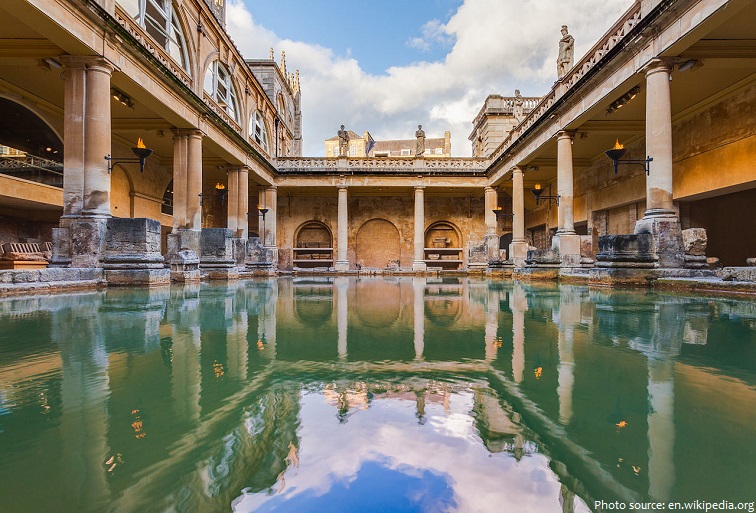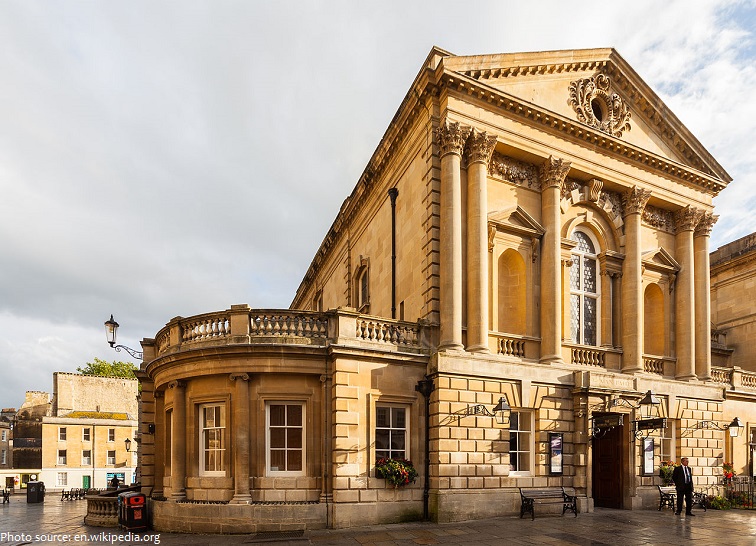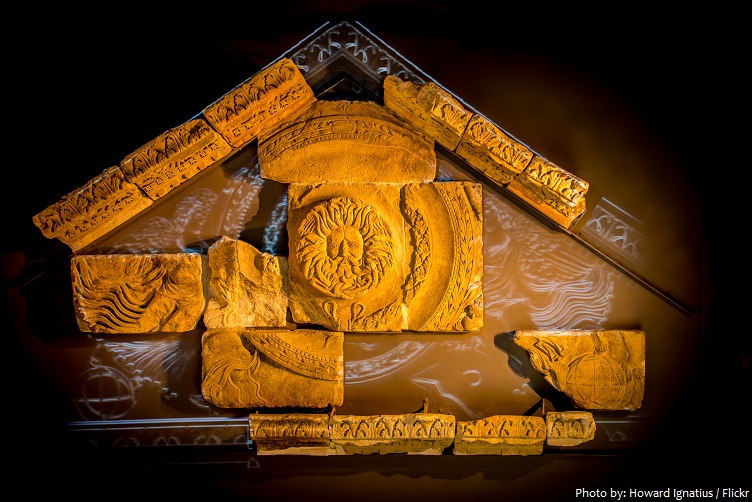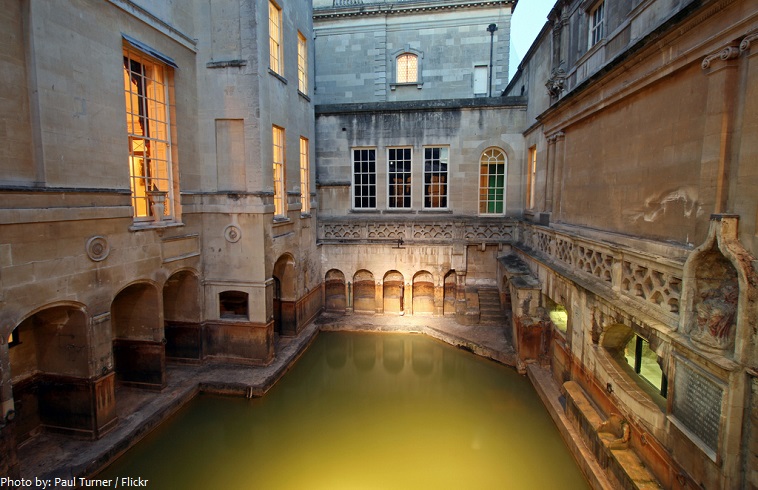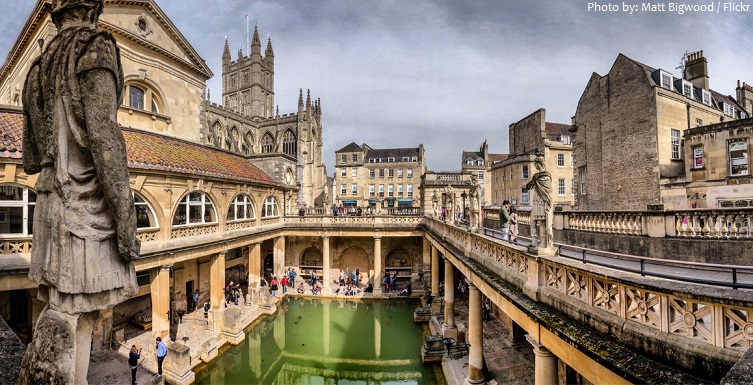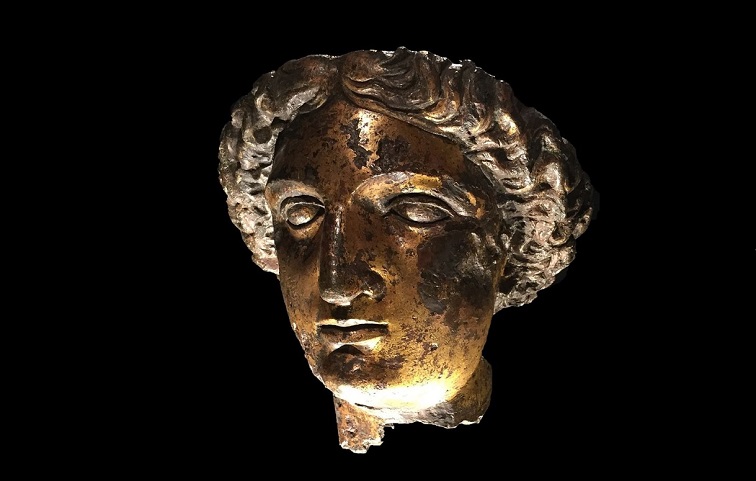The Roman Baths complex is a site of historical interest in the English city of Bath.
The Roman Baths are one of the finest historic sites in Northern Europe.
The site includes the remains of the Temple of Aquae Sulis, the Roman Baths, the Sacred Spring, and a well-presented museum of artifacts found at the site.
The Roman Baths themselves are below the modern street level.
The buildings above street level date from the 19th century. The visitor entrance is via concert hall by J M Brydon.
The fundamental part of the Roman Baths is the Sacred Spring. Hot water at a temperature of 46°C (114.8°F) rises here at the rate of 1,170,000 liters (309,000 US gallons) every day.
The first shrine at the site of the hot springs was built by Celts, and was dedicated to the goddess Sulis. After the Roman invasion, Sulis was identified with the Roman goddess Minerva, but the name Sulis continued to be used. This led to the town’s ancient Roman name of Aquae Sulis (“the waters of Sulis”).
The Temple of Sulis Minerva at Bath is one of only two classical temples known from Roman Britain.
The temple was constructed in 60-70 AD and the bathing complex was gradually built up over the next 300 years.
After the Roman withdrawal the baths fell into disrepair and were eventually lost due to silting up.
The baths have been modified on several occasions, including the 12th century when John of Tours built a curative bath over the King’s Spring reservoir [photo below] and the 16th century when the city corporation built a new bath (Queen’s Bath) to the south of the Spring.
The ancient Roman Baths were rediscovered and excavated in the late 18th century. As well as being an important archaeological find, they have from that time to the present been one of the city’s main attractions.
The spring is now housed in 18th-century buildings, designed by architects John Wood, the Elder and John Wood, the Younger, father and son.
The heart of the complex is the Great Bath, a lead-lined pool filled with steaming, geothermally heated water from the Sacred Spring to a depth of 1.6 meters 5.2 feet. Though now open-air, the bath would originally have been covered by a 40-meter (130-foot) high, barrel-vaulted roof.
The terrace which overlooks the Great Bath and is lined with Victorian statues of Roman emperors and governors of Britain. The statues on the terrace date to 1894, as they were carved in advance of the grand opening of the Roman Baths in 1897.
There is also the cold circular plunge pool which is brought to life with animated projections, and the hot rooms which were heated in Roman times using the hypocaust system.
A film of lifesize bathers is projected on to the walls of the Circular Bath, to show how it was probably used in Roman times. The ‘shows’ occur every few minutes and last about 90 seconds.
There is a fascinating museum displaying artefacts discovered on the site. Look out for the famous gilded bronze head of Minerva [photo below] and a striking carved Gorgon’s Head, as well as some of the 12,000 Roman currency coins thrown into the spring as votive offerings to the goddess.
The Roman Baths are unsafe for bathing because the water has passed through the still-functioning lead pipes constructed by the Romans. However, the luxurious new Thermae Spa nearby, which opened in September 2004, allows modern-day bathers to experience the waters for themselves.
In 1983 a new spa water bore-hole was sunk, providing a clean and safe supply of spa water for drinking in the Pump Room. The famous spa water containing 43 minerals.
Geoffrey of Monmouth in his largely fictional Historia Regum Britanniae describes how in 836 BC the spring was discovered by the British king Bladud who built the first Moorish baths. Early in the 18th century Geoffrey’s obscure legend was given great prominence as a royal endorsement of the waters’ qualities, with the embellishment that the spring had cured Bladud and his herd of pigs of leprosy through wallowing in the warm mud.
The Baths are a major tourist attraction and, together with the Grand Pump Room, receive more than one million visitors a year.
It was featured on the 2005 TV program Seven Natural Wonders as one of the wonders of the West Country.
